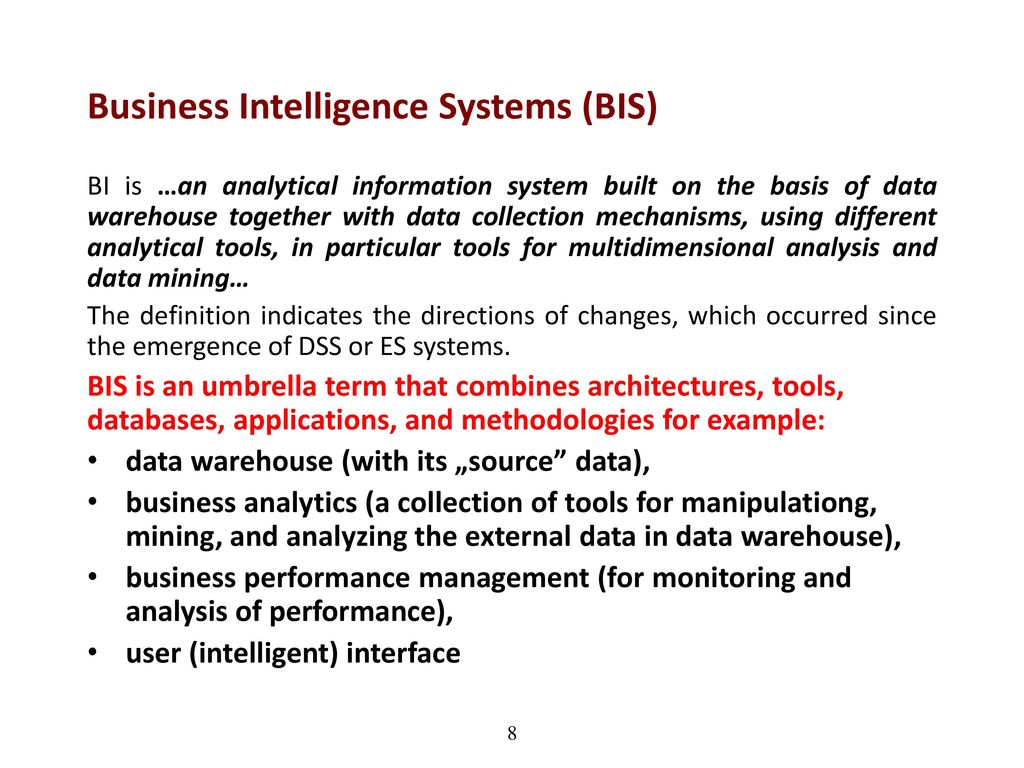Car Accident in Parking Lot: Determining Fault
Oh boy, when cars collide in a parking lot, figuring out who’s to blame can be like solving a Rubik’s cube – complex and frustrating. Unlike accidents on the open road, parking lot mishaps don’t have clear-cut traffic laws to guide us. So buckle up, because we’re diving into the murky waters of parking lot fault determination.
Factors Affecting Fault
Picture this: you’re cruising through a parking lot, minding your own business, when suddenly, BAM! Another car plows into you. Now, you’re both sitting there, wondering, “Wait a second, who’s at fault here?” Well, my friend, determining fault in a parking lot accident is like a complicated jigsaw puzzle, where each piece represents a different factor. Let’s break it down:
Witnesses and Evidence
Eyewitnesses are like gold when it comes to determining fault in a parking lot accident. If there were any witnesses around, they can provide valuable information about how the accident happened. So, if you’re involved in a parking lot accident, don’t be shy – ask around to see if anyone saw what went down.
Also, keep your eyes peeled for any evidence that can support your case. This could include things like skid marks, damage to the vehicles, or even security camera footage. The more evidence you have, the better your chances of proving who’s at fault.
Police Reports
If the police were called to the scene of the accident, they will likely have filed a report. This report will contain important information about the accident, such as the names of the drivers involved, the time and location of the accident, and any citations that were issued. Getting a copy of the police report can be very helpful in determining fault. You can usually request a copy from the police department.
Insurance Companies
Once you’ve filed a claim with your insurance company, they will likely send out an adjuster to investigate the accident. The adjuster will review the evidence and determine who they believe is at fault. If you disagree with the adjuster’s findings, you can file an appeal.
Car Accident in Parking Lot: Who’s at Fault?
Figuring out who’s at fault in a parking lot car accident can be like trying to find a needle in a haystack. There are so many different factors to consider, and it can be tough to know where to start. But don’t worry, we’re here to help. In this article, we’ll break down the key factors that insurance companies and courts will consider when determining fault in a parking lot accident.
Factors Considered
Witness Statements
If there were any witnesses to your accident, their statements will be crucial in determining fault. Be sure to get their names and contact information, and write down their accounts of what happened as soon as possible. Their statements can help to corroborate your own version of events and support your claim.
Traffic Patterns
The traffic patterns in the parking lot can also play a role in determining fault. For example, if you were driving in a designated one-way lane and the other driver was driving the wrong way, it’s likely that they will be found at fault. Similarly, if you were backing out of a parking space and the other driver was speeding, the other driver may be held liable.
Physical Evidence
The physical evidence at the scene of the accident can also help to establish fault. This evidence can include things like skid marks, damage to the vehicles, and the position of the vehicles after the accident. For example, if there are skid marks leading up to the other driver’s car, it may be evidence that they were speeding or driving recklessly. Similarly, if your car is damaged on the front end and the other driver’s car is damaged on the back end, it may be evidence that you were rear-ended.
Insurance Coverage
In most cases, the driver who is at fault for an accident will be responsible for paying for the damages. This means that their insurance company will be responsible for covering the costs of your repairs, medical bills, and other expenses. However, there are some cases where the other driver may not have insurance or may not have enough insurance to cover the damages. In these cases, you may be able to file a claim with your own insurance company.
Comparative Fault
In some states, the concept of comparative fault applies to car accidents. This means that both drivers can be found to be at fault for an accident, even if one driver is more at fault than the other. In these states, the damages will be apportioned based on the percentage of fault that each driver is found to have. For example, if you are found to be 20% at fault for an accident and the other driver is found to be 80% at fault, you will be responsible for paying 20% of the damages.
Car Accident in a Parking Lot: Who’s at Fault?
When a car accident occurs in a parking lot, determining fault can be a tricky task. Unlike on the open road, there are no clear-cut traffic laws governing these spaces. However, understanding the concept of negligence can help you navigate the complexities of assigning liability.
Negligence
Negligence is the failure to take reasonable care to avoid harm to others. In the context of car accidents, negligence can take many forms. For example, a driver who is distracted by their phone or speeding through a crowded lot may be deemed negligent. Establishing negligence requires proving that the at-fault driver owed a duty of care to the other party, breached that duty, and caused the accident as a direct result of their breach.
Breach of Duty
A breach of duty occurs when a driver fails to meet the expected standard of care for a reasonably prudent person in a similar situation. In parking lots, this standard includes driving at a safe speed, paying attention to surroundings, and yielding to pedestrians and other vehicles. Any violation of these established norms could constitute a breach of duty.
Causation
Even if a breach of duty is established, liability cannot be assigned unless it can be proven that the breach directly caused the accident. This means that the accident would not have occurred but for the at-fault driver’s negligence. Proving causation requires establishing a clear chain of events linking the negligent behavior to the injuries or damages sustained.
Comparative Negligence
In some jurisdictions, the doctrine of comparative negligence applies to car accidents. This means that the fault for an accident may be divided among multiple parties. For instance, if one driver was speeding but the other failed to yield the right of way, both drivers may be held partially liable for the crash.
Insurance Implications
Determining fault in a parking lot accident is crucial for insurance purposes. The at-fault driver’s insurance company will typically be responsible for covering the damages suffered by the other party. However, in cases where comparative negligence applies, the insurance companies may share the costs based on the percentage of fault attributed to each driver.
Car Accident in Parking Lot: Who’s at Fault?
Parking lot car crashes are a common occurrence, often leading to confusion about who bears responsibility. Determining fault in these incidents can be tricky, as various factors come into play. However, understanding insurance coverage and laws can help resolve the issue and ensure fair compensation.
Factors Determining Fault
In parking lot accidents, determining fault often involves assessing the actions of both drivers. Factors such as speed, careless driving, right-of-way, and driver visibility are taken into account. The driver who fails to exercise reasonable care and causes the accident is typically deemed at fault.
Negligence
Negligence is a crucial aspect of fault determination. It refers to the failure to act as a reasonable person would in similar circumstances. Drivers have a duty of care to operate their vehicles safely and avoid causing harm to others. If a driver breaches this duty, they can be held legally liable for any resulting damages.
Comparative Fault
In some jurisdictions, the concept of comparative fault or contributory negligence applies to parking lot accidents. Comparative fault means that both drivers may share responsibility for the crash. In such cases, each driver’s liability is determined based on their percentage of fault, and compensation is adjusted accordingly.
Insurance Coverage
Insurance coverage plays a significant role in resolving fault and compensation in parking lot accidents. Both drivers’ insurance policies may provide coverage for damages and injuries. Understanding the terms and provisions of these policies can help determine who is responsible and ensure proper compensation.
Witness Statements and Evidence
Witness statements and other evidence can be invaluable in establishing fault in parking lot accidents. Witnesses can provide valuable accounts of what happened and help determine the driver’s actions and level of negligence. Other evidence, such as traffic camera footage or skid marks, can also contribute to a clearer understanding of the incident.
Car Accident in Parking Lot: Who’s at Fault?
In the bustling environment of a parking lot, mishaps can strike in the blink of an eye, leaving drivers bewildered about who bears the responsibility. Navigating the labyrinth of insurance claims and legal jargon can feel like a daunting task, but understanding the fundamentals of fault determination can help you navigate these uncharted waters with more confidence.
When it comes to parking lot accidents, determining fault can be a bit of a jigsaw puzzle. Unlike the open road, there are often no clear lines of sight or defined lanes to guide drivers. Instead, drivers must rely on their instincts, spatial awareness, and a dash of good luck to avoid collisions. But what happens when luck runs out and an accident occurs? Who gets the blame? That’s where the concept of fault comes into play.
Establishing Fault
In most cases, fault is assigned based on the legal principle of negligence. Negligence boils down to the failure to act as a reasonably prudent person would under similar circumstances. Did the driver exercise due care? Did they obey traffic laws and regulations? Did they take reasonable steps to avoid the accident? Answering these questions can help determine if negligence played a role.
Witness statements and physical evidence, such as skid marks or damage to vehicles, can provide valuable clues in establishing fault. Insurance companies meticulously investigate these accidents to piece together the puzzle and determine who was at fault.
Shared Fault: Comparative Negligence
Life isn’t always black and white, and neither are parking lot accidents. Sometimes, more than one driver shares the blame. That’s where comparative negligence comes in. This doctrine allows courts to apportion fault among multiple parties, assigning a percentage of responsibility to each.
For instance, if Driver A is deemed 60% at fault and Driver B is 40% at fault, Driver A’s compensation may be reduced by 60%, while Driver B’s compensation may be reduced by 40%. Comparative negligence ensures that fault is fairly distributed, preventing one driver from bearing the entire burden of an accident that wasn’t entirely their fault.
Common Causes of Parking Lot Accidents
Parking lot accidents can stem from a variety of factors, including:
- Inattention or distracted driving
- Failure to yield
- Reckless driving
- Poor visibility due to weather conditions
- Unmarked or poorly designed parking spaces
Understanding these common causes can help drivers stay alert and avoid potential hazards.
Steps After an Accident
If you find yourself involved in a parking lot accident, here are a few steps to follow:
- Stay calm and ensure your safety.
- Exchange information with the other driver(s) involved.
- Document the scene by taking pictures.
- Report the accident to your insurance company promptly.
- Seek medical attention if necessary.
Remember, remaining composed and taking the right steps can make a significant difference in the aftermath of an accident.
Car Accident in Parking Lot: Who’s at Fault?
Navigating the aftermath of a car accident in a parking lot can be a confusing and stressful experience. Whether you’re a seasoned driver or a newbie behind the wheel, understanding who bears the brunt of the blame is crucial for determining next steps. Parking lot accidents can vary significantly, from minor fender benders to more serious collisions, so it’s important to assess the situation carefully before assigning fault.
Determining Fault
When determining fault in a parking lot accident, several factors come into play, including:
- Speed: Were either vehicle traveling at an excessive speed, which could have contributed to the accident?
- Visibility: Were there any obstructions, such as parked cars or blind spots, that may have limited visibility for either driver?
- Negligence: Did either driver fail to exercise reasonable care, such as by running a stop sign or failing to yield?
- Pedestrians: Were there any pedestrians involved in the accident, and if so, where were they located and how did they contribute to the collision?
- Traffic patterns: Are there designated traffic lanes or parking spaces in the lot, and did either driver violate these markings?
- Witness statements: If there were any witnesses present, their accounts can provide valuable information about what they observed.
Legal Assistance
Consulting with an attorney can provide guidance on your rights, responsibilities, and legal options. An attorney can help you gather evidence, negotiate with insurance companies, and represent you in court if necessary.
Shared Fault
In some cases, both drivers may share fault for the accident. For example, if one driver was speeding while the other failed to yield the right of way, both parties could be held partially liable for the damages.
Insurance Claims
After an accident, it’s crucial to notify your insurance company promptly. They will investigate the incident and determine who is at fault. If you’re found to be at fault, your insurance rates may increase. However, if the other driver is deemed responsible, their insurance should cover the costs of your damages.
Avoiding Accidents
Here are some tips for avoiding parking lot accidents:
- Drive cautiously: Always obey the speed limit and be aware of your surroundings.
- Be aware of pedestrians: Pay attention to pedestrians and yield the right of way when necessary.
- Park carefully: Make sure your vehicle is fully parked in a designated spot and avoid blocking traffic.
- Use mirrors: When reversing or pulling out of a parking space, use your mirrors to check for other vehicles and pedestrians.
- Be patient: Don’t rush when driving in a parking lot. Take your time and be mindful of others.
Remember, the best way to deal with a parking lot accident is to prevent it from happening in the first place. By following these tips, you can help keep yourself and others safe on the road.
Who’s at Fault in a Parking Lot Accident?
Determining fault in a parking lot accident is like untangling a Gordian knot—it can be a complex puzzle to solve. Unlike open roads, parking lots are a hotbed of converging vehicles, pedestrians, and obstacles, making it a hotbed for fender benders.
Figuring out who’s responsible for a parking lot mishap boils down to establishing negligence. Was one driver speeding, distracted, or disregarding traffic signs? Were they backing up without checking their blind spots? These factors, among others, can play a pivotal role in assigning fault.
Preventing Parking Lot Accidents
Avoiding parking lot accidents is like dodging raindrops on a stormy day—it’s all about being vigilant and taking precautions. Here are some tips to keep in mind:
**1. Stick to the Speed Limit:** Remember, parking lots aren’t racetracks. Keep your speed in check to give you ample time to react to unexpected situations.
**2. Keep Your Eyes Peeled:** Don’t be a road zombie. Pay attention to your surroundings and scan for pedestrians, other vehicles, and obstacles. It’s like being a hawk, constantly on the lookout for potential hazards.
**3. Communicate Clearly:** Use turn signals, make eye contact with other drivers, and even wave if necessary. Clear communication can go a long way in preventing misunderstandings and accidents.
**4. Respect Traffic Signs:** Stop signs and yield signs are not mere suggestions. Obey them religiously to avoid collisions. It’s like following the rules of a game—if you don’t play by them, chaos ensues.
**5. Mind Your Blind Spots:** Before backing up, take a moment to check your rearview mirrors and blind spots. It’s like having a second pair of eyes, helping you avoid backing into other vehicles or pedestrians.
**6. Park Responsibly:** Don’t be a space hog. Park within designated lines and avoid blocking aisles or fire hydrants. It’s like being a good neighbor—considerate and respectful of others.
**7. Be Patient and Courteous:** Parking lots are shared spaces, so share them with others patiently and courteously. Don’t tailgate or cut people off. Remember, it’s like being in a crowded elevator—everyone’s trying to get to their destination, so be respectful and avoid unnecessary confrontations.




Leave a Reply